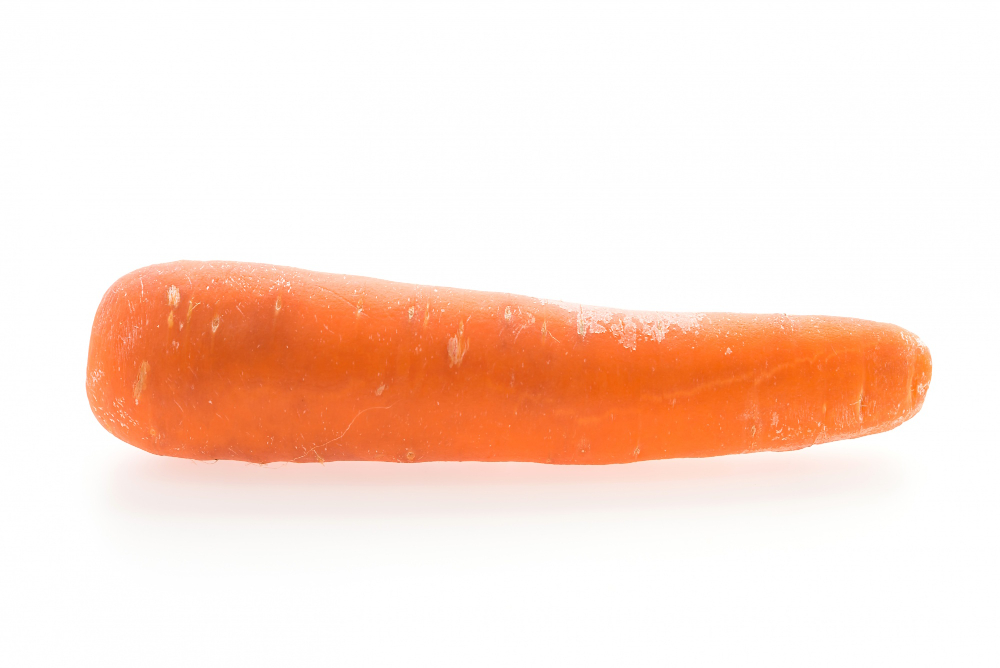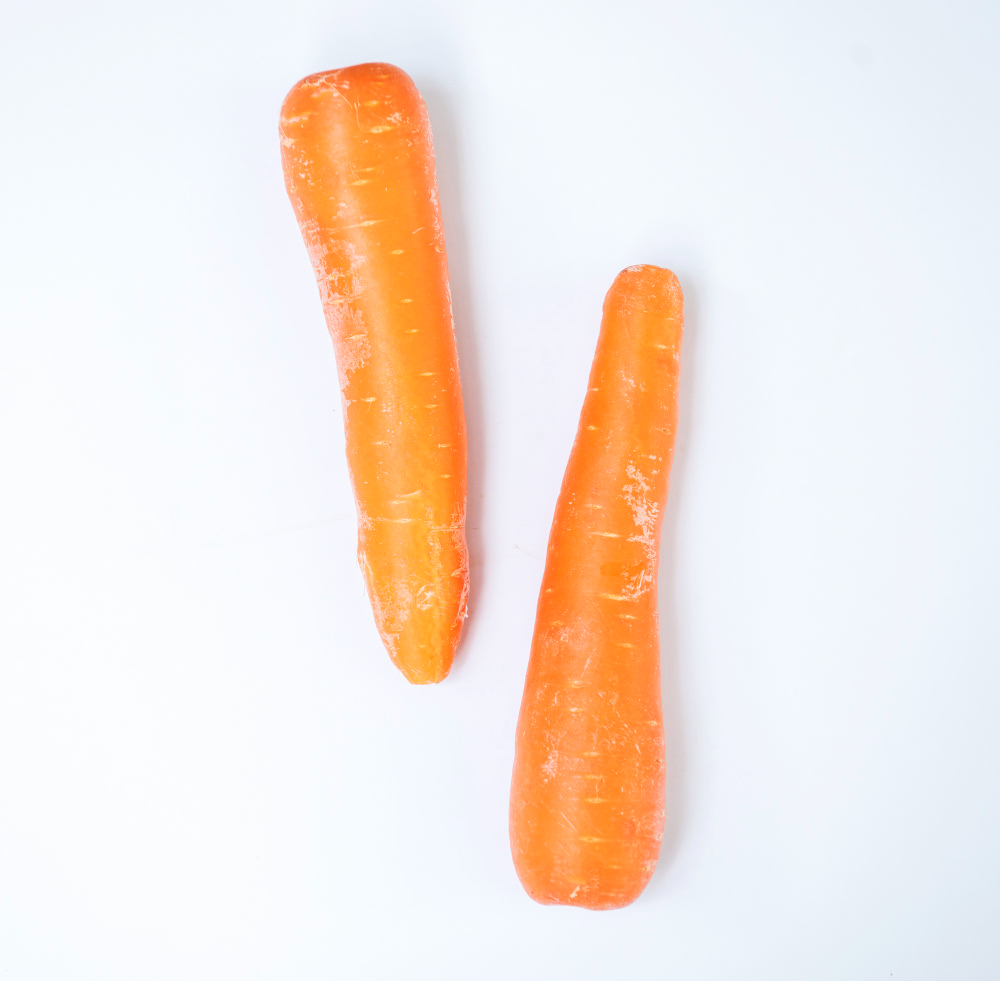
Why People Turn to Household Items
In the ever-evolving landscape of intimacy, there’s a curious trend we’ve observed: the use of household items in one’s intimate life. Why, you might ask, would someone venture down this path when there’s a myriad of commercial products available? Just like some people prefer DIY crafts over store-bought items, there’s an allure to crafting one’s own solutions. It’s a blend of convenience, cost-effectiveness, and the thrill of experimentation.
Imagine being in the midst of a captivating novel. Suddenly, you’re struck with the urge to bookmark a page, but there isn’t a bookmark in sight. What do you do? Fold the page? Maybe. Or perhaps you grab the nearest object a pen, a hairpin, a post-it note and use that. This analogy might give you a glimpse into the mindset of someone choosing a carrot over a commercial intimate item. It’s all about immediate access and improvisation.
Where the Idea Originated
The relationship between vegetables and intimacy isn’t new. Historically, many cultures have woven these two seemingly disparate things together in mythology, art, and even humor. It’s fascinating how something as mundane as a carrot can be thrust into the spotlight, garnering both chuckles and raised eyebrows. We can trace some of these connections back centuries, to tales whispered among friends or depicted in ancient artworks.
But let’s fast forward to today. Have you ever noticed how certain TV shows or movies drop hints, making subtle (or not-so-subtle) jokes about veggies in the bedroom? The media, in all its vibrant shades, plays a pivotal role in shaping perceptions. Just as Shakespeare once wrote, “All the world’s a stage,” and in this grand performance, even the humble carrot has had its cameo.
Specific Health Dangers Associated with Using Carrots and Similar Items

Before diving headfirst into this DIY intimate realm, it’s imperative we address the elephant in the room: health risks. Let’s put it on the table (no pun intended). Using something like a carrot isn’t the same as a medically approved intimate product. Think about it: would you feel comfortable putting any random item from your kitchen inside your body without a second thought?
| Items | Risks |
|---|---|
| Carrot | Sharp edges, possible pesticide residue, allergenic reactions |
| Cucumber | Size inconsistency, breakage risk, pesticide residue |
| Banana (with peel) | Pesticide residue, texture discomfort, potential squishiness |
Choosing a household item, like a carrot, comes with a range of concerns. These could range from minor discomforts to significant health implications. Do the benefits outweigh the risks? We aim to provide you with all the information, ensuring you’re equipped to make an informed decision.
Understanding the Psychology Behind Improvisation
The Human Need to Innovate
In the vast realm of human behaviors, one aspect stands out remarkably: our innate desire to innovate. From creating fire to modern technologies, we’re hardwired to find solutions, even in unexpected places. This drive isn’t confined merely to our survival instincts or monumental achievements; it permeates every aspect of our lives, including our intimate moments. So, when presented with the carrot conundrum, it’s a reflection of our broader behavioral patterns.
“Necessity is the mother of invention.” This ancient proverb aptly encapsulates the crux of our improvisational tendencies.
Social and Cultural Factors
While individual innovation plays a part, it’s impossible to overlook the broader societal and cultural implications. Different societies have varied levels of acceptance when it comes to discussing or exploring intimacy. In some places, commercial intimate products might be frowned upon or even inaccessible. Here, improvisation isn’t just a choice; it’s a necessity.
List of factors influencing improvisation in intimacy:
Distinguishing Safety from Adventure
Balancing Curiosity with Caution
Venturing into the unknown can be thrilling. The allure of the forbidden, the taboo, the novel—it’s undeniable. But where does one draw the line between a harmless experiment and a hazardous endeavor? With items like carrots, it’s crucial to distinguish between what’s intriguing and what’s genuinely safe.
Chart:
- Curiosity Level (from Low to High): This measures the innate human desire to experiment.
- Safety Concern (from Low to High): Reflecting the potential risks associated with the action.
With a carrot, for example, the curiosity might be at a medium level, but the safety concern could range from medium to high depending on individual usage and precautions.
Taking Precautions
If there’s a take-home message from this exploration, it’s the importance of being informed. Improvisation, whether in intimacy or other realms of life, should be approached with a balance of enthusiasm and caution. Before you leap, look. Before you experiment, educate yourself. Knowledge, after all, is the best tool in any endeavor.
List of Precautions:
- Research thoroughly: Understand the risks and benefits.
- Consult experts: Whether it’s a doctor or a therapist, getting professional insights can be invaluable.
- Stay updated: As more research emerges, guidelines and recommendations might evolve.
The Science Behind Improvised Choices
Our minds are fascinating landscapes, dotted with neural pathways and dominated by waves of neurotransmitters. When confronted with the idea of using an unconventional object like a carrot, we aren’t just making a whimsical choice. There’s science in play.
“Our choices, even the bizarre ones, can often be traced back to complex neural interplay.”
Dopamine and Novelty
At the core of our risk-taking and explorative behaviors is the neurotransmitter dopamine. Often referred to as the ‘feel-good’ chemical, dopamine plays a pivotal role in reward-driven behavior. When we encounter something new or forbidden, our dopamine levels spike, nudging us towards the unknown.
Table:
| Behavior | Dopamine Release (On a scale of 1-10) |
|---|---|
| Eating favorite food | 6 |
| Listening to music | 5 |
| Experimenting with new objects | 8 |
| Achieving a goal | 9 |
As evident from the table, novel behaviors, like experimenting, tend to induce significant dopamine release.

Societal Norms vs. Individual Desires
In our journey through life, we walk a tightrope between societal norms and individual desires. While society has its prescribed dos and don’ts, our inner selves thrive on the thrill of breaking away occasionally. A carrot’s alternate use, in many ways, embodies this delicate dance between conformity and rebellion.
List of Norms vs. Desires:
- Norm: Buy prescribed products for intimate needs.
- Desire: Improvise with available objects for a novel experience.
- Norm: Stick to traditional methods.
- Desire: Venture into the uncharted, guided by curiosity.
- Norm: Discuss intimacy in hushed tones.
- Desire: Openly communicate, explore, and understand one’s body.
Risks and Responsibilities

Every choice comes with its set of risks. While curiosity can lead to rewarding experiences, it’s essential to navigate with a well-informed mind. Not all improvisations are safe, and it’s on us to ensure that our adventurous spirit doesn’t land us in trouble.
“An ounce of prevention is worth a pound of cure.” – A timeless proverb reminding us of the value of caution.
List of potential risks and their mitigations:
- Risk: Physical injury due to improper use.
- Mitigation: Extensive research and consultation.
- Risk: Misunderstanding or miscommunication with partners.
- Mitigation: Open dialogues and setting boundaries.
- Risk: Psychological impacts of an adverse experience.
- Mitigation: Speaking to therapists or counselors.
The Cultural Perspective
While we’ve delved into the psychology and biology behind choices, understanding cultural influences is paramount. Cultures around the world have had a say in what’s acceptable and what’s taboo. These norms and traditions, often passed down generations, influence our perceptions and choices more than we might realize.
“Culture is the silent judge that sits in the back of our minds, influencing our every decision.”
A Global Look at Improvisation
Different cultures have different views on improvisation, especially when it comes to intimacy. While some cultures are open, others tend to be more conservative. Here’s a brief look:
Table:
| Country/Region | Attitude Towards Improvisation | Commonly Used Items |
|---|---|---|
| Western Europe | Open-minded | Various fruits, feathers |
| Middle East | Conservative | Incense, oils |
| East Asia | Mixed views | Herbal concoctions, jade tools |
| Africa | Open to traditional methods | Beads, natural herbs |
This table sheds light on how diverse the world is when it comes to improvisational choices.
The Journey of Acceptance
As society evolves, so does its acceptance of topics that were once hushed. The 21st century has seen an unparalleled rise in open conversations about intimacy and improvisation. Social media platforms, blogs, and forums have become havens for these discussions, bridging gaps and debunking myths.
List of Platforms Encouraging Open Conversations:
- Online blogs focused on sexual wellness.
- Podcasts hosting therapists and experts.
- Forums like Reddit where anonymity fosters candidness.
- Instagram influencers promoting healthy discussions.
Improvisation – A Double-Edged Sword?
While improvisation can be liberating, it’s crucial to distinguish between safe exploration and risk. This distinction is vital in ensuring that our adventurous spirit remains a source of pleasure, not pain.
Chart:
Imagine a pie chart here showing:
- Safe Practices: 70%
- Risky Ventures: 20%
- Uncertain: 10%
This distribution showcases the importance of being informed and cautious.
In Conclusion – Embracing Our Choices
To improvise is human. From the arts to our personal lives, improvisation signifies our ability to adapt and innovate. Whether it’s a carrot or another object, the underpinning factor is our human desire to explore, experience, and evolve.
So, the next time curiosity strikes, remember the intricate web of influences at play and take a moment to appreciate the complexities of our human journey.
“Improvisation isn’t just about the choices we make; it’s about understanding the myriad of reasons behind those choices.”
Safety and Precautions – Walking the Thin Line
While there’s a vast expanse of creative freedom that comes with improvisation, it’s pivotal to be aware of the boundaries. These boundaries are set by our personal comfort, but also by the very real concerns for safety.
The Checklist for Safe Improvisation
Before embarking on any experiment, consider this checklist:
- Material Composition: What’s the item made of? Is it body-safe?
- Hygiene: How clean is the object? Remember, what goes on our body should be free from harmful bacteria.
- Potential Harm: Could there be sharp edges or parts that could break off?
- Ease of Retrieval: Ensure anything you use is easy to remove and won’t get lost.
Quote:
“Safety doesn’t restrict freedom; it enables it. With the right precautions, we unlock true liberation.”
Stories from Around the World – Real Experiences
Every culture, every country, and every individual has a story. By sharing, we can learn and evolve. Here are some anonymized experiences from people who’ve walked this path before.
The Artist from Paris
Lila, an artist, speaks of how her journey with improvisation has influenced her artwork. Using textures and shapes in her art, she mirrors her personal experiences, creating a tapestry of stories and emotions.
The Conservative Thinker from Riyadh
For Ahmed, growing up in a conservative society meant secrecy. Over the years, his perspective changed, leading to a harmonious balance between his beliefs and personal desires.
The Curious Duo from New York
Jake and Maria, a couple, embarked on a journey of exploration together. They believe improvisation strengthened their bond, teaching them trust and communication.

The Science Behind Pleasure
Biology plays a huge role in our experiences of pleasure. From the nerve endings that transmit sensations to the brain chemicals that evoke feelings, there’s a vast network at play.
The Role of Dopamine
Dopamine, often labeled the ‘pleasure chemical’, spikes during moments of intense pleasure. Improvisation, by its nature of novelty, can often lead to increased dopamine production.
List: Key Dopamine Functions:
- Rewards and pleasure sensation.
- Regulating mood and emotional responses.
- Enhancing a feeling of satisfaction.
Serotonin and Oxytocin – The Bonding Chemicals
While dopamine is about the immediate rush, chemicals like serotonin and oxytocin play roles in bonding and longer-lasting contentment.
Improvisation – Beyond the Bedroom
Improvisation isn’t just about intimacy. The spirit of adaptation and innovation applies to various facets of life, from cooking to business strategies.
Business Strategies
Leading companies often improvise, adapting to market changes swiftly. The success of many startups can be attributed to their ability to pivot.
Culinary Adventures
Ask any chef, and they’ll tell you about the joy of tossing the recipe book aside and going with the flow, letting the ingredients tell the story.
A Final Word – The Ever-Evolving Landscape
As we move forward, the world of improvisation will continue to grow, morphing with societal norms and individual choices. The key lies in education and safe exploration. As we understand our desires and the factors influencing them, we can carve a path of joyous experiences, keeping safety and respect at the forefront.
References
- “The Psychology of Pleasure” – Dr. Richard J. Davidson.
- “Global Views on Intimacy” – International Journal of Cultural Studies.
- “The Science of Dopamine” – Dr. Sandra Aamodt.


